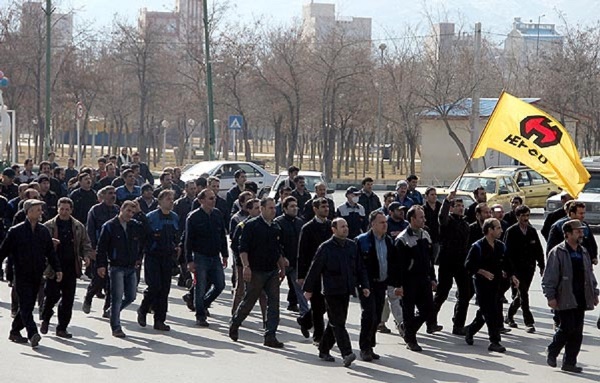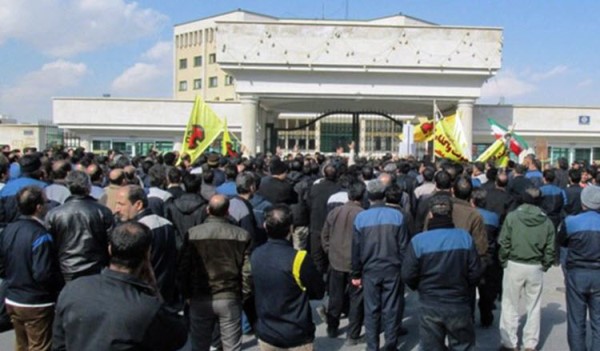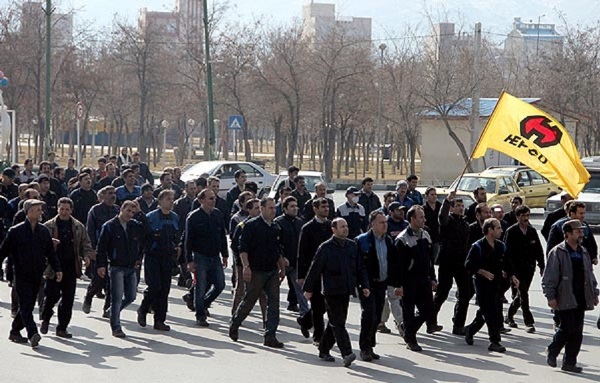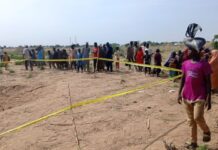New wave of struggles will come on a higher level
P. Daryaban, CWI
On 19 and 20 September, Arak, an Iranian industrial city 170 miles from the capital, Tehran, was the scene of a strike, pickets and clashes between workers from two major factories in the city, Azarab and Hepco, and the police.
Azarab manufactures equipment for power plants, cement and sugar factories, while Hepco assembles heavy road construction vehicles.
The Azarab management, which is supported by corrupt officials, have not paid their workers for months. It has also stopped paying workers’ insurance premiums, which means that they cannot use medical services when they are ill. Similarly, Hepco factory bosses failed to pay the wages of their workers for months. The Iranian government privatised both companies in the 2000s.
These harsh living conditions led to 1,700 workers marching into Arak city and blocking the main road to Tehran. The regime treated the workers brutally and sent the riot police to suppress the workers. Hepco workers staged a rally outside the factory. The police attacked both pickets on 19 September.

Though some officials criticised the violence and brutality, the police again stormed the factory compound a day later. This resulted in direct clashes between workers and the police that left workers injured. The police used tear-gas and shot in the air to disperse workers.
Photos and videos of the clashes were soon distributed on social media and caused a huge wave of sympathy and solidarity from workers. For the first time, the regime’s TV channels felt compelled to broadcast reports of the labour protest.
The harsh treatment of the workers even caused fake labour organisation, which always try to kill the momentum of the protests, to condemn the police and described its behaviour as “inhuman”.
Regime forced to intervene
Labour Minister Ali Rabiei had to promptly go to Arak to calm down the protest with promises. He said a fund would be allocated to pay the workers’ arrears.
The Arak events represent a highpoint in the working class’s fightback in recent years. The regime brazenly denies the basic rights of workers to form independent trade unions. However workers organise themselves in their workplaces and advance their demands.
Another important point with the Arak protest is that it was flying in the face of the regime that has tried to stifle protests by militarising society under the pretext of protecting public order and security. The regime arrogantly tries to persuade the Iranian people that they enjoy “security” in a tumultuous region shattered by bombs, suicide attacks and war.
However, just as miners at the Alborz coal mine staged a picket and blocked a road just a day after the terror attack on Iran’s parliament, Arak workers showed again their different class agenda to that of regime’s expansionist ambitions and pushed forward their demands for better living conditions.
The Arak strike showed the regime cannot get rid of its predicaments. Each month more instances of corruption and mismanagement of the regime’s reactionary institutions are exposed. The continuing wars in Syria and Yemen are depleting the regime’s resources. With Trump’s threat to back out of the nuclear deal with Iran, President Rouhani’s dream that foreign investments will flow into the country and the economic crisis will be relieved are in danger of vanishing into thin air.
No doubt, in the months to come, we will hear more about the Iranian workers’ fightback. This new wave will not be limited to demanding the payment of arears or relief of the harsh working conditions but will raise the right of workers’ to organise themselves in independent trade unions.





